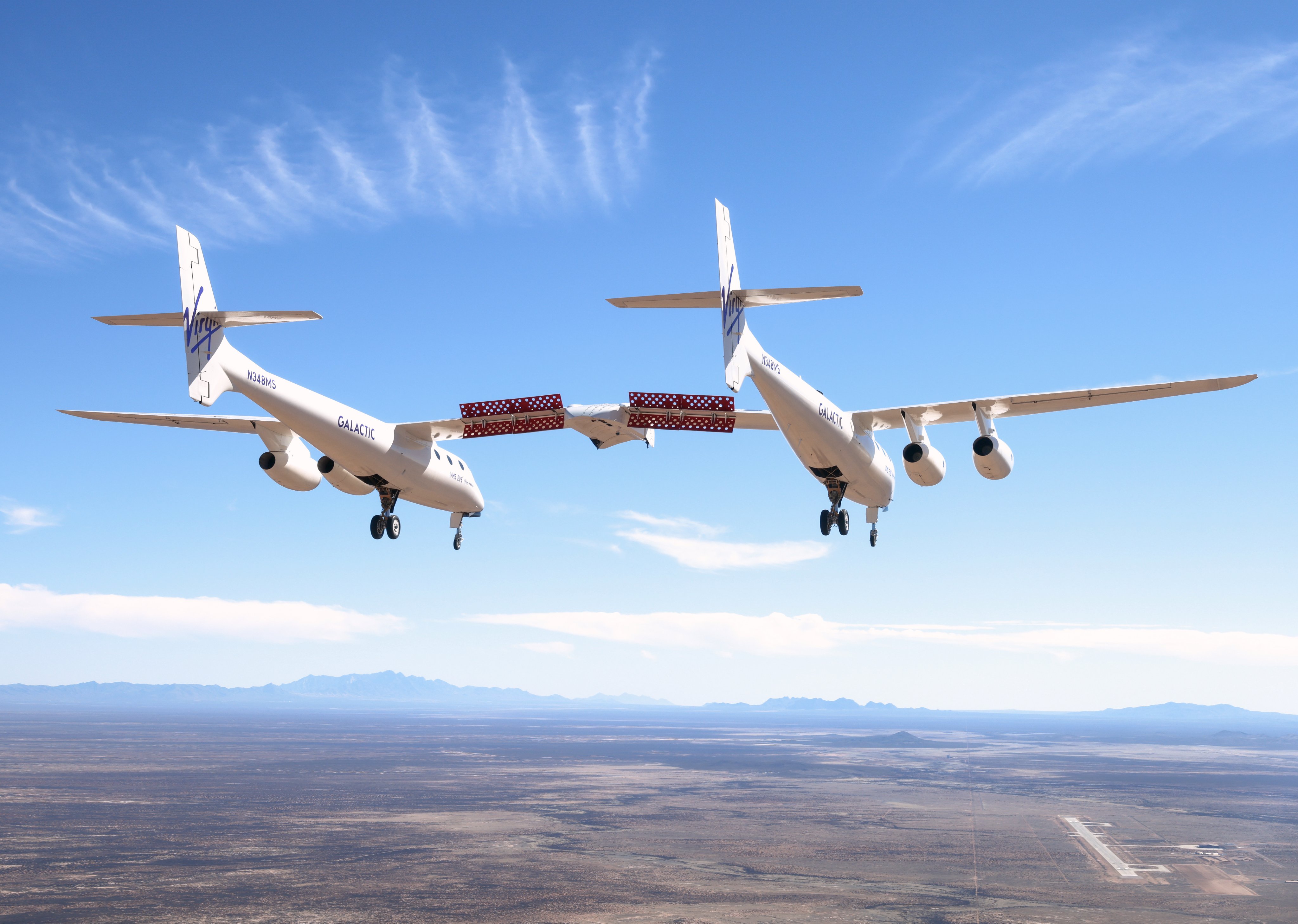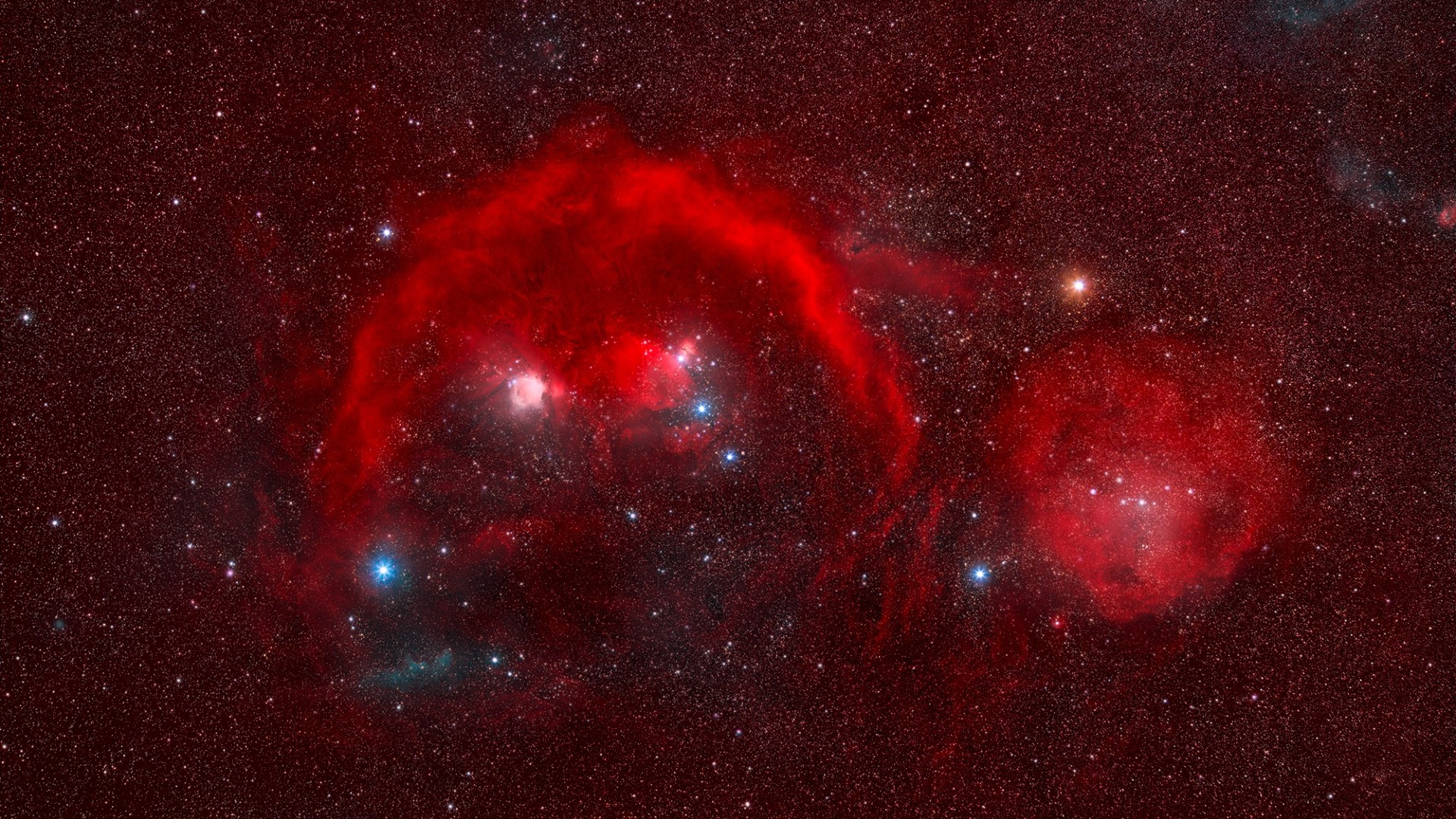
Virgin Galactic's carrier plane has come home again.
On Monday (Feb. 27), the aircraft, called VMS Eve, flew from California's Mojave Air and Space Port to Spaceport America in New Mexico, the hub of Virgin Galactic's commercial operations.
Eve had been in Mojave, the site of Virgin Galactic's manufacturing facility, since October 2021, when it flew there from Spaceport America to undergo extensive upgrade and maintenance work. So Monday's sojourn, the plane's second since that 2021 trip, served as a test flight as well as a trip home.
"We made many enhancements and upgrades last year to increase Eve's flight rate capability that included a new launch pylon, new horizontal stabilizers, as well as upgraded avionics and mechanical systems," Colin Bennett, Virgin Galactic astronaut and flight test engineer, said in a Q&A that the company published on Monday.
"During today's flight and the flight a couple of weeks ago, the pilots moved through a series of procedures and maneuvers to ensure the upgraded vehicle performed according to the expected models," Bennett said.
In photos: Virgin Galactic's 1st fully crewed spaceflight with Richard Branson
VMS Eve is designed to carry Virgin Galactic's six-passenger VSS Unity suborbital spaceliner high into the sky. At an altitude of about 50,000 feet (15,000 meters), Eve drops Unity, which then ignites its onboard rocket motor and makes its way to the final frontier. Eve and Unity come back to Earth separately, both landing on a runway.
Breaking space news, the latest updates on rocket launches, skywatching events and more!
The two vehicles — both of which are piloted — have conducted four spaceflights to date, two from Mojave and two from Spaceport America. The most recent of these four test flights carried Virgin Group founder Richard Branson and three other passengers to space from the New Mexico site in July 2021.
Not long after that highly publicized mission, Virgin Galactic announced it was going to suspend spaceflights for a while to focus on maintaining and upgrading both Unity and Eve. As Bennett noted above, such work included replacing Eve's pylon, the point between the carrier plane's twin fuselages where Unity attaches.
Unity arrived at Spaceport America before Eve. The duo will start flying together again from the site relatively soon, if all goes according to plan.
"We'll perform some more functional check flights, which include pilot training," Bennett said in the Virgin Galactic Q&A, when asked what the next steps for both vehicles will be.
"Then we move into ground testing, with Unity mated underneath Eve's giant wing. We'll test the new pylon (the device that attaches Unity to Eve), running checks on the communication and camera systems, the cabin environmental controls and more," he added.
"Then, the home stretch," Bennett continued. "Eve will fly with Unity attached. They will fly to altitude and release Unity to perform a solo glide back to land at Spaceport. And finally, a fully crewed rocket-powered flight to space! These final validation flights run the vehicles through all final system and operational checks that provide us the data to finalize our models, which will clear the vehicles for commercial service!"
Virgin Galactic's first commercial flight, a research mission for the Italian Air Force, is on track lift to off this spring, company representatives have said.
Mike Wall is the author of "Out There" (Grand Central Publishing, 2018; illustrated by Karl Tate), a book about the search for alien life. Follow him on Twitter @michaeldwall. Follow us on Twitter @Spacedotcom or Facebook.
Join our Space Forums to keep talking space on the latest missions, night sky and more! And if you have a news tip, correction or comment, let us know at: community@space.com.

Michael Wall is a Senior Space Writer with Space.com and joined the team in 2010. He primarily covers exoplanets, spaceflight and military space, but has been known to dabble in the space art beat. His book about the search for alien life, "Out There," was published on Nov. 13, 2018. Before becoming a science writer, Michael worked as a herpetologist and wildlife biologist. He has a Ph.D. in evolutionary biology from the University of Sydney, Australia, a bachelor's degree from the University of Arizona, and a graduate certificate in science writing from the University of California, Santa Cruz. To find out what his latest project is, you can follow Michael on Twitter.
